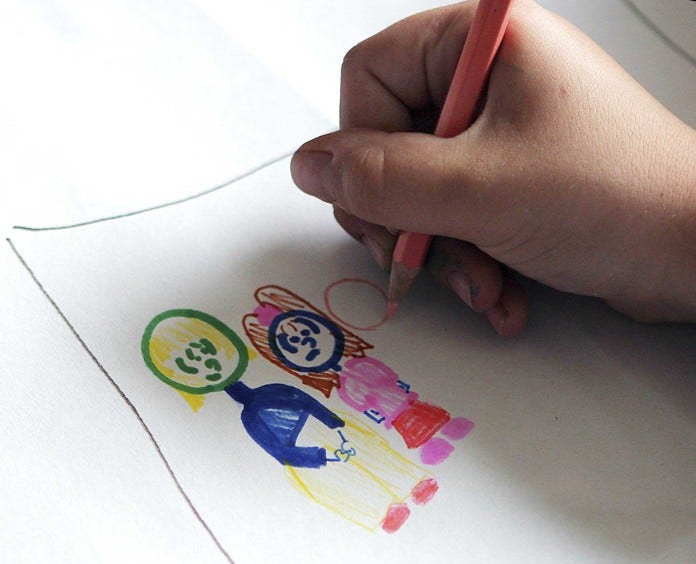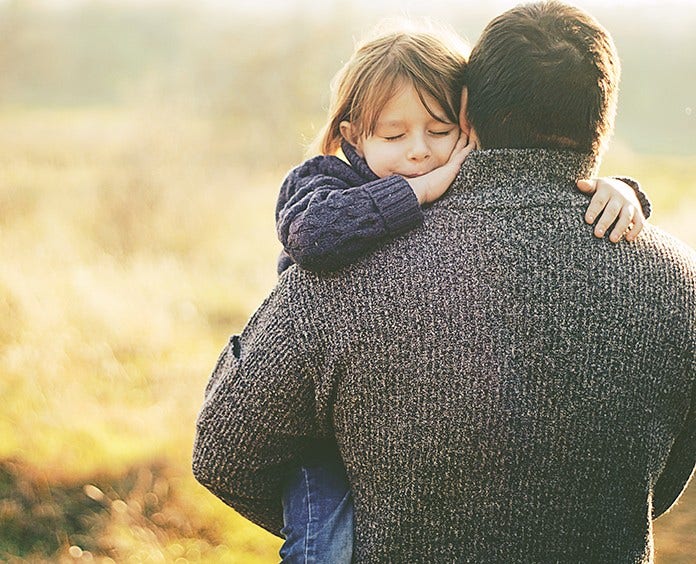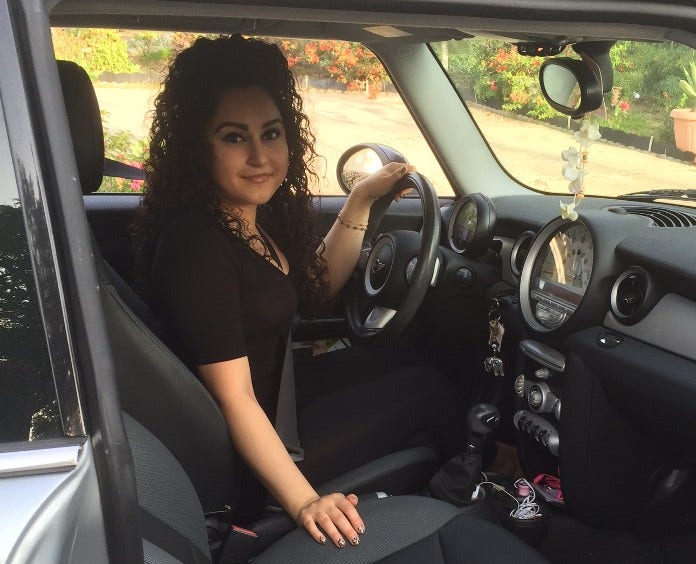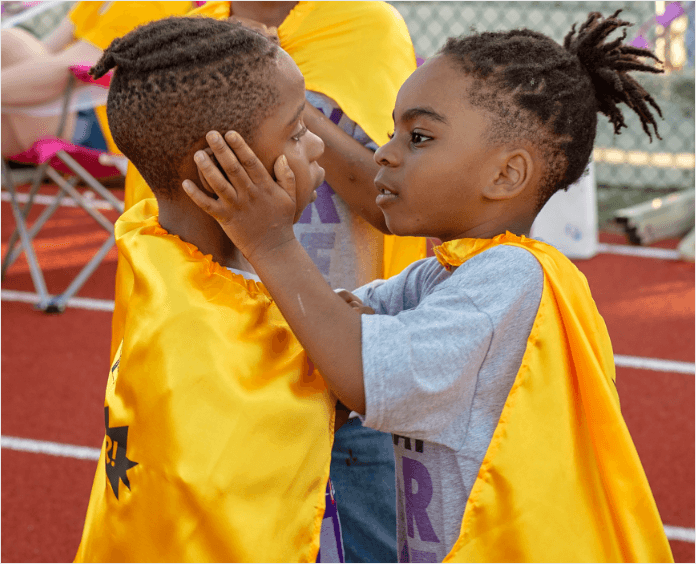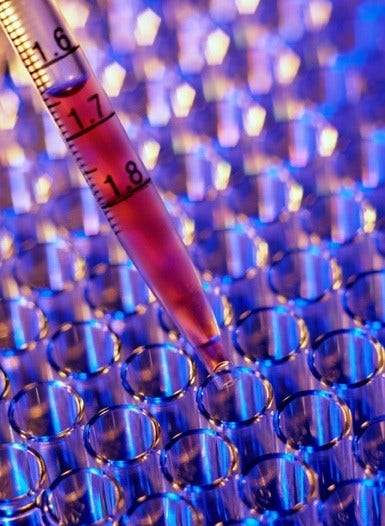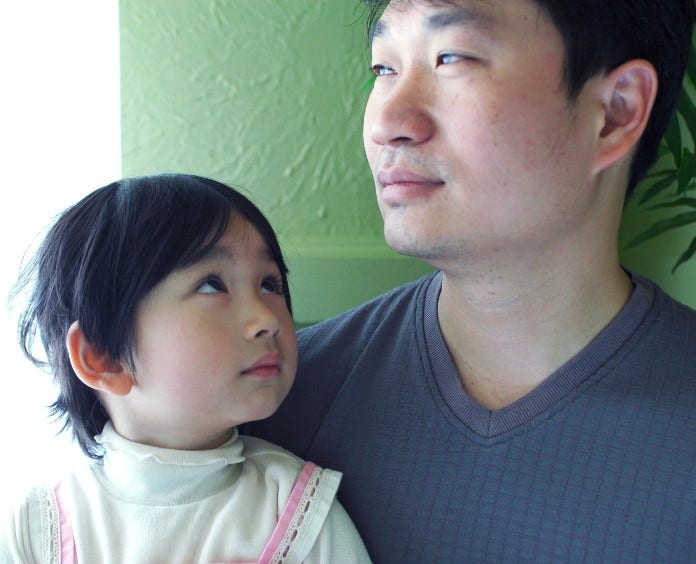Childhood Leukemia
Leukemia is the most common type of cancer in children and teens. Among children and teens diagnosed with cancer, 1 in 3 will have a type of leukemia.
About childhood leukemia
Leukemias are cancers of the blood cells. Leukemia most often occurs in the earliest forms of white blood cells.
The center of our bones, called the bone marrow, makes our red blood cells, white blood cells, and platelets. When leukemia occurs, cancer cells multiply in the bone marrow. As the cancer cells build up, they crowd out the normal cells. When this happens, leukemia cells can spill into the bloodstream and the bone marrow can have a tough time making enough normal cells. This can cause people with leukemia to have symptoms like low energy, bone pain, infections, easy bleeding, or bruising.
Sometimes leukemia can spread to other parts of the body such as the lymph nodes, spleen, liver, central nervous system (the brain and spinal cord), testicles, or other organs.
Some other childhood cancers, such as neuroblastoma or rhabdomyosarcoma, start in other organs and can spread to the bone marrow, but these cancers are not leukemia.
Types of leukemia in children
There are a few types of leukemia that affect children. The type of leukemia a child has plays a key role in how it is treated and the child’s outlook (prognosis). To diagnose leukemia, testing on samples of the blood, bone marrow, cerebrospinal fluid (CSF), and sometimes lymph nodes may be needed.
Be sure to ask the health care team if you have any questions about your child’s leukemia diagnosis.
The different types of leukemia are based on:
- If the leukemia is acute (fast growing) or chronic (slower growing)
- If the leukemia starts in lymphoid cells or myeloid cells, both of which are types of immune cells that are made in the bone marrow
Acute leukemias
Most childhood leukemias are acute. These leukemias grow quickly and often need treatment right away. The main types of acute leukemia are acute lymphoblastic leukemia (ALL) and acute myeloid leukemia (AML). In rare cases, acute leukemia can have features of both ALL and AML. When this happens, it is called a mixed phenotype acute leukemia (MPAL).
About 3 out of 4 childhood leukemias are ALL. These leukemias start in early forms of white blood cells, called lymphoblasts. Normally they would mature into certain cells that help our bodies fight infections, called lymphocytes. There are several subtypes of ALL, which are based mainly on:
- The type of cell the leukemia looks most like (often B cell or T cell) and how far the cells matured before becoming cancer, known as the immunophenotype of the leukemia
- If the cancer cells have certain gene or chromosome changes
B-cell ALL
The most common form of ALL in children starts in early forms of B cells, which normally mature into cells that make antibodies to fight infections. When these cells develop gene changes or an abnormal number of chromosomes, they can become cancer. These B cells lose the ability to fight infections and can multiply very quickly.
B cells travel to the spleen (an immune organ in the belly, usually under the left ribcage) and lymph nodes to grow and mature. When B cells become leukemia, the spleen and lymph nodes may enlarge. This can result in a large spleen or large lymph nodes, commonly felt as lumps in the neck, underarm, or groin areas.
T-cell ALL
T-cell ALL is a less common form of ALL. T cells are lymphocytes that help fight infections. When these cells develop gene changes or an abnormal number of chromosomes, they can become cancer. These T cells lose the ability to fight infection and can multiply very quickly. This type of leukemia is more common in older children.
T-cell ALL, like B-cell ALL, can cause a large spleen or lymph nodes. Unlike B cells, T cells mature in a small immune organ located in front of the windpipe, called the thymus. When T cells develop into leukemia, the thymus can also enlarge, which can sometimes lead to breathing problems.
For more detailed information, see Prognostic Factors and Survival Rates for Childhood Leukemia.
For more detailed information on the treatment of ALL, see Childhood Acute Lymphoblastic Leukemia (ALL) Treatment.
AML is typically a fast-growing cancer that starts in one of the following types of early (immature) bone marrow cells:
- Myeloblasts: These cells normally become white blood cells called granulocytes (neutrophils, eosinophils, and basophils).
- Monoblasts: These cells normally become white blood cells called monocytes and macrophages.
- Erythroblasts: These cells normally become red blood cells.
- Megakaryoblasts: These cells normally become megakaryocytes, the cells that make platelets.
AML has many subtypes, which are based mainly on:
- If the leukemia cells look most like cells that were meant to become white blood cells, red blood cells, or platelets and how mature they were before becoming cancer (immunophenotype)
- If the leukemia cells have certain gene or chromosome changes
- If the leukemia is related to the treatment of an earlier cancer (with chemotherapy or radiation)
- If the child with leukemia has Down syndrome
Children with AML may experience symptoms like low energy, fevers, weight loss, and enlarged lymph nodes, spleen or liver. In some cases, children with AML can experience headaches, confusion, or difficulty breathing. This may happen when there are too many myeloblasts in the bloodstream, which can slow or block blood flow.
For more detailed information see Prognostic Factors and Survival Rates for Childhood Leukemia.
For more detailed information on the treatment of AML, see Childhood Acute Myeloid Leukemia (AML) Treatment.
Chronic leukemias
Chronic leukemias are rare in children. These leukemias tend to grow more slowly than acute leukemias. There are two main types of chronic leukemias in children, chronic lymphocytic leukemia (CLL) and chronic myeloid leukemia (CML).
CLL is a cancer of lymphocytes and is described by stage. A stage is assigned based on blood counts and the size of the lymph nodes, spleen, or liver at diagnosis, which tells doctors how far the cancer has spread.
CLL is extremely rare in childhood. For this reason, when it occurs, it is treated similarly to adults. In people with no symptoms, because CLL is slow growing, doctors may hold off on treatment until there are signs that the cancer is progressing. If treatment is needed, targeted drugs, chemotherapy, and immunotherapy may be used for CLL. In some rare cases, radiation or stem cell transplant may be used.
For more information on adult CLL, see Chronic Lymphocytic Leukemia (CLL).
CML is typically a slower-growing cancer of early (immature) myeloid bone marrow cells. CML accounts for only 3% of leukemias in children and is much more common among adults.
CML is caused by a specific gene change, called the BCR-ABL fusion or Philadelphia chromosome. It is a slow disease with 3 phases: chronic, accelerated, and blast phase. These phases are based on the number of immature blood cells seen in the blood or bone marrow. Depending on the phase at diagnosis, children may have no symptoms or have symptoms like low energy and weight loss.
CML is extremely rare in childhood. For this reason, when it occurs it is treated similarly to adults. Targeted drugs called tyrosine kinase inhibitors (TKIs) are often used to treat CML. These include drugs like imatinib (Gleevec), dasatinib (Sprycel), nilotinib (Tasigna), and bosutinib (Bosulif). Stem cell transplant may be an option if these drugs are not successful.
For more detailed information, see Prognostic Factors and Survival Rates for Childhood Leukemia.
For more detailed information on the treatment of CML in children, see Childhood Chronic Myeloid Leukemia Treatment.
Juvenile myelomonocytic leukemia (JMML)
JMML is a rare type of leukemia that is neither chronic nor acute. It usually does not grow as fast as AML or as slowly as CML. It occurs most often in young children (average age of 2 years).
Symptoms can include pale skin, fever, cough, easy bruising or bleeding, trouble breathing (from too many white blood cells in the lungs), rash, and enlarged spleen, liver, and/or lymph nodes.
JMML is often caused by gene changes that affect the RAS/MAPK pathway. It can also be associated with Neurofibromatosis type 1, a family cancer syndrome, and Noonan syndrome, a rare inherited condition that affects how children grow and develop.
For more detailed information, see Prognostic Factors and Survival Rates for Childhood Leukemia.
For more detailed information on the treatment of JMML in children, see Juvenile Myelomonocytic Leukemia Treatment.
Quick Guides
- Written by
- References

Developed by the American Cancer Society medical and editorial content team with medical review and contribution by the American Society of Clinical Oncology (ASCO).
Aplenc R, Elgarten CW, Choi JK, Meshinchi S. Chapter 17A: Acute Myeloid Leukemia and Myelodysplastic Syndromes. In: Blaney SM, Adamson PC, Helman LJ, eds. Pizzo and Poplack’s Pediatric Oncology. 8th ed. Philadelphia, Pa: Lippincott Williams & Wilkins; 2021.
Chen J, Suttorp M, Hijiya N. How I treat chronic myeloid leukemia in children and adolescents. Blood. Published online March 25, 2025.
Gramatges MM, O’Brien MM, Rabin KR. Chapter 16: Acute Lymphoblastic Leukemia. In: Blaney SM, Adamson PC, Helman LJ, eds. Pizzo and Poplack’s Pediatric Oncology. 8th ed. Philadelphia, Pa: Lippincott Williams & Wilkins; 2021.
National Cancer Institute. Childhood Acute Lymphoblastic Leukemia Treatment (PDQ). 2025. Accessed at https://www.cancer.gov/types/leukemia/hp/child-all-treatment-pdq on May 7, 2025.
National Cancer Institute. Childhood Acute Myeloid Leukemia Treatment (PDQ). 2025. Accessed at https://www.cancer.gov/types/leukemia/hp/child-aml-treatment-pdq on May 7, 2025.
National Cancer Institute. Chronic Lymphocytic Leukemia Treatment (PDQ®)–Health Professional Version. 2024. Accessed at https://www.cancer.gov/types/leukemia/hp/cll-treatment-pdq on May 7, 2025.
Rau RE, Loh ML. Chapter 17B: Myeloproliferative Neoplasms of Childhood. In: Blaney SM, Adamson PC, Helman LJ, eds. Pizzo and Poplack’s Pediatric Oncology. 8th ed. Philadelphia, Pa: Lippincott Williams & Wilkins; 2021.
Last Revised: July 22, 2025
American Cancer Society medical information is copyrighted material. For reprint requests, please see our Content Usage Policy.
This information is possible thanks to people like you.
We depend on donations to keep our cancer information available for the people who need it most.
